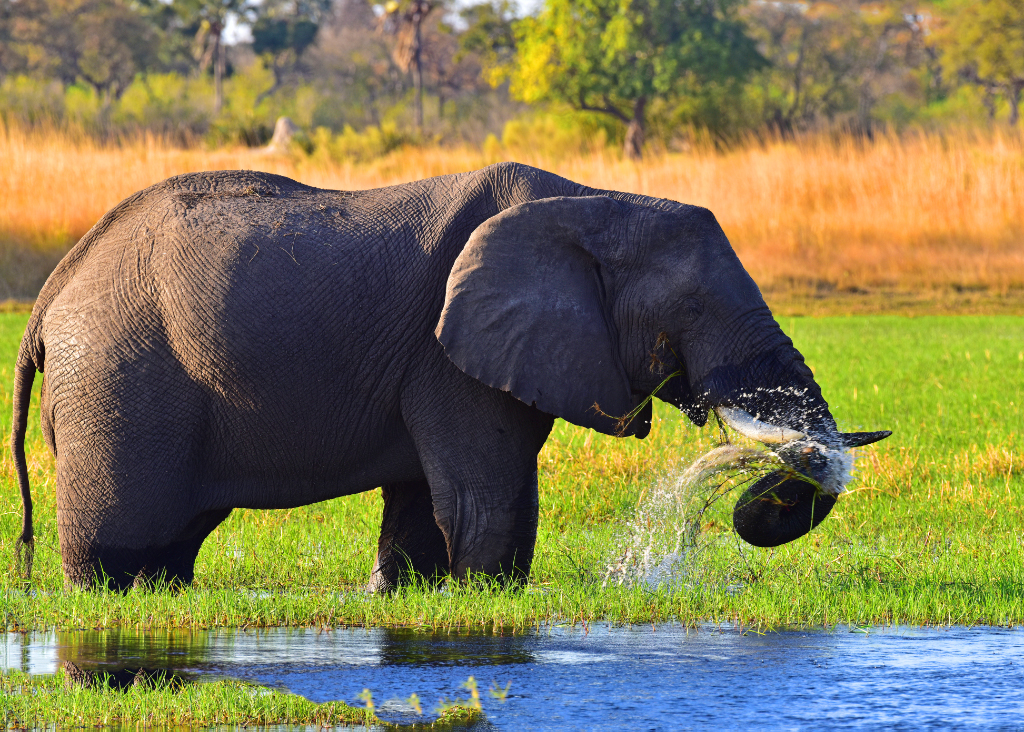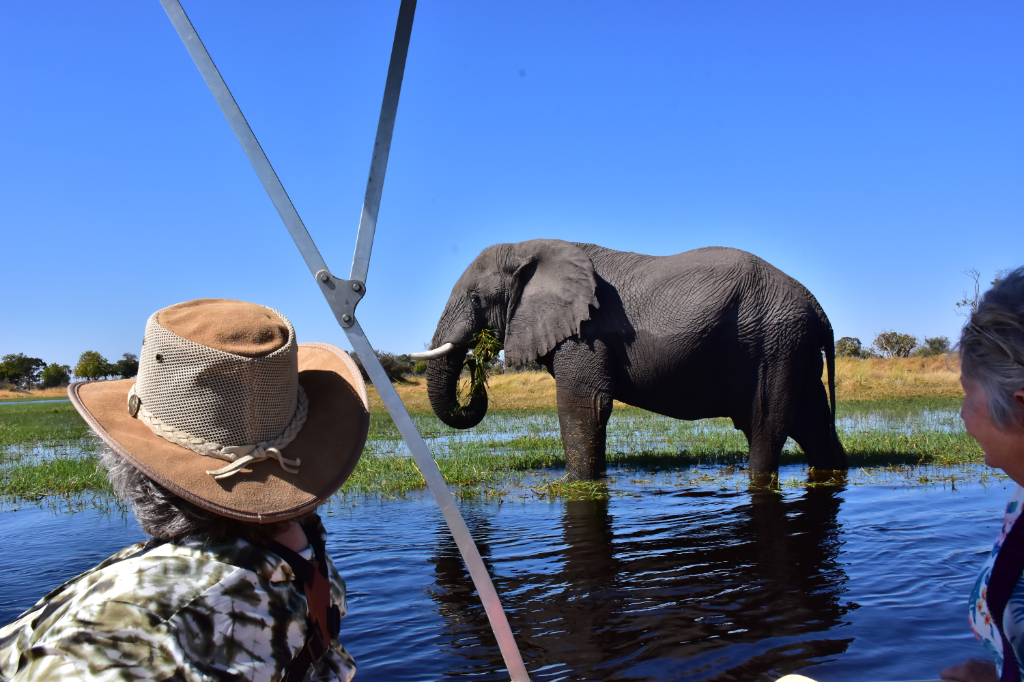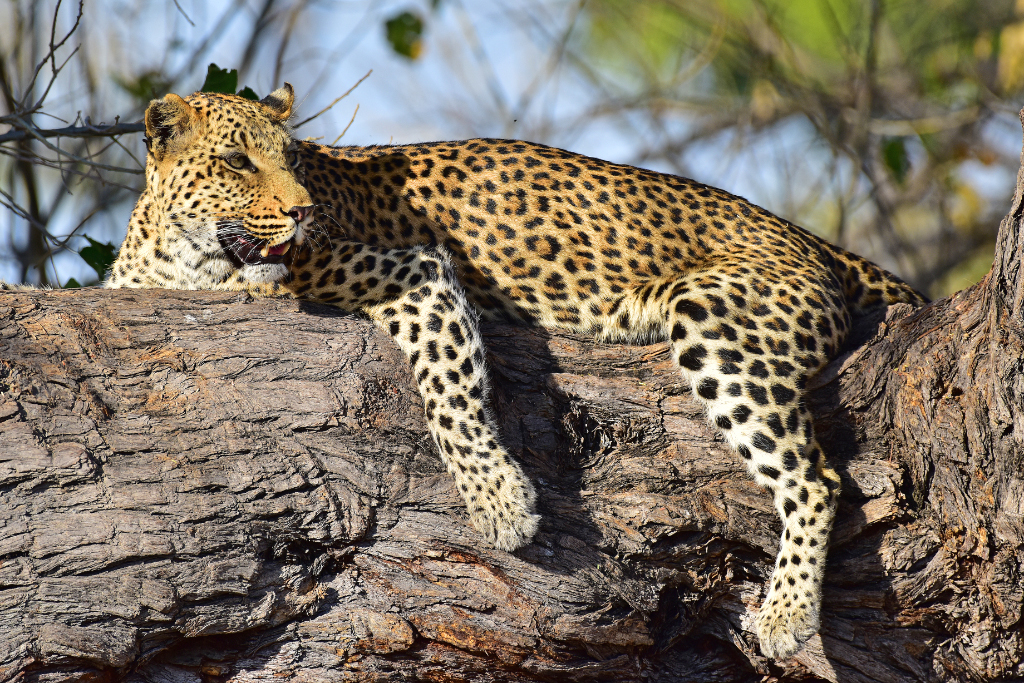
Botswana has been amazing. I would have been happy leaving Africa with the pictures I took in the first three days, and it just kept getting better. Our first stop, Kasane, is the home of the Chobe National Park. The Chobe River is on the northern side of the park and is the border with Namibia. The river creates predictable animal movement and provides wetlands to feed elephants, hippos, water buffalo (African Buffalo), giraffes, and many species of antelopes. It also draws predators like lions, leopards, and crocodiles as they follow their food sources. Hippos are in abundance, an interesting grass-eating hazard; Hippos cause more human deaths in Africa than any other animal.
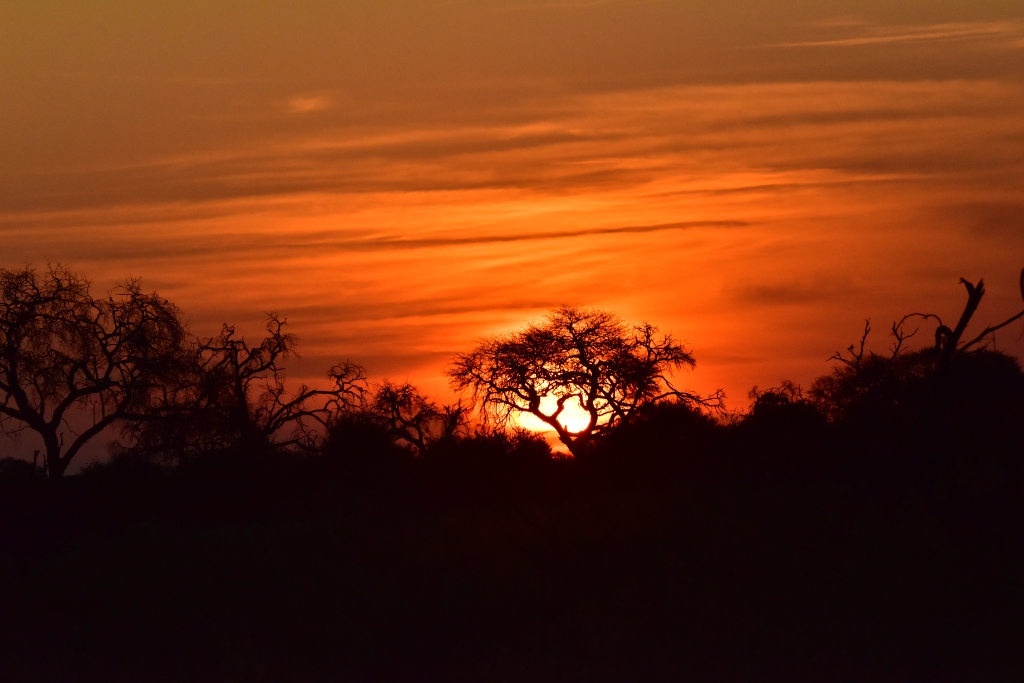
Because we are visiting river areas, the wildlife is abundant. Nights are noisy, not the quiet solitude we get in the woods at home. All night elephants are noisily breaking trees and swishing water grass to clean it before eating. Hippos are making Jabba the Hut sounds, and water buffalo are stomping around and eating noisily. The people in one of the other tents at Rra Dinare (it means male water buffalo) complained that three or four water buffalo were under their tent platform all night, keeping them awake. When the large animals wander away or sleep, the frogs and insects pick up the slack, sounding like they are using karaoke machines to broadcast background noise. It’s fun in an abstract way, laying there trying to decide which animals are making which noises. Rules at the tent camps require a staff member escort after dark and we had a couple of detours to avoid elephants. We learned being in your tent after dark also applied to the front porch of our tent platform. At Moremi Crossing we went out to look at the stars, thinking the platform was safe, until the view between us and the rest of the camp was blocked by a large elephant pulling up thirty feet away. We hastily retired inside.
The guides driving our ‘safari trucks’, mostly modified Toyota Land Cruisers, are local and well trained. It becomes quickly apparent we rely on their knowledge and familiarity with the animals to get us safely close to the wide variety of interesting wild animals.
And close we were, much closer than I ever thought imaginable. While I took many pictures with my main camera (a Nikon full-frame DSLR) and 200-500mm lens, I kept my backup DSLR with a 18-140mm lens at the ready, and used it much more than I had planned.
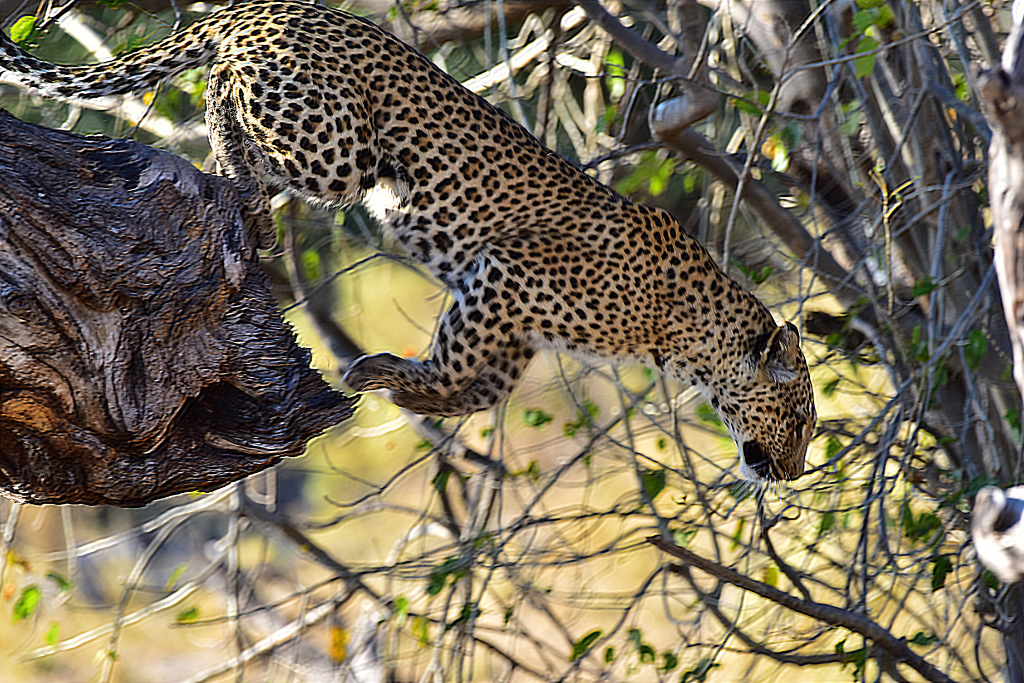
One of the things that has impressed me is our guides. Most start off as staff at the camps and study on their own to take the guide test. They are assistants and trackers, then professional guides. By the time they become full guides they have years of experience with the animals and show refreshing insight into animal behavior. They know how to get us close without causing danger, and accurately interpret the animals’ reactions to keep everyone, and the animals, safe. The highest level of guide is allowed to carry guns, but none of ours have them. These people grow up with these animals and the dangers, and they know how to mitigate the risk and live in harmony without shooting everything they don’t understand. Don’t get me wrong, they do have guns in their villages, but they view guns as a last resort. And if they do kill an animal, the government investigates to ensure the animal was killed in self defense. It’s nice to see a culture living with animals instead of the Western approach of bending nature to fit what humans want!
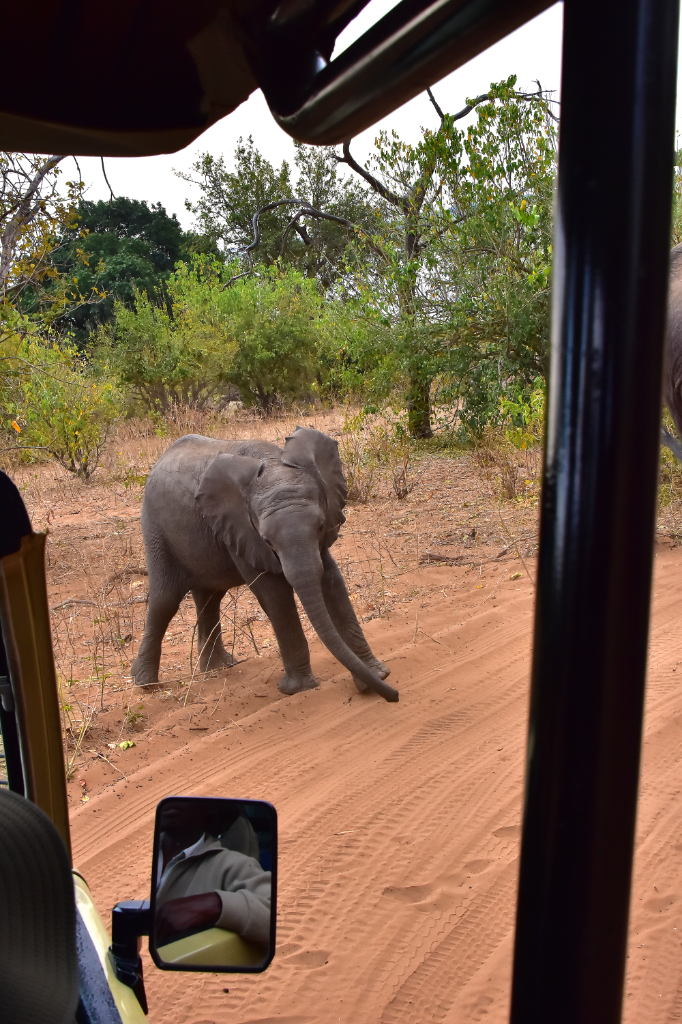
Our reliance on our guides knowledge was never more obvious than our first day in the park. We stopped alongside a small breeding herd of elephants and our guide killed the engine while we took pictures. The mother elephant crossed the dirt track in front of us, followed by the baby elephant. I became concerned when the baby swung back towards us, but our guide was one step ahead. As you can see in the above picture, he was watching the bull elephant behind us in the mirror. The baby turned back because the bull was charging. He didn’t like the truck separating him from the cow. The guide started the truck and drove straight at the baby and cow, driving them off the road to much trumpeting by momma elephant. It was enough to squeeze past and escape the charging bull, who it ends up was just warning us. Our guide told us when an elephant charges with it’s trunk and tail lowered it is a warning, a ‘mock charge’. To my thinking when a 13 foot, 12,000 pound animal runs at us because it doesn’t want us where we happen to be, there is nothing ‘mock’ about the experience. I’ll try to remember to only take an elephant charge seriously if their trunk and tail are raised. Riiiight.
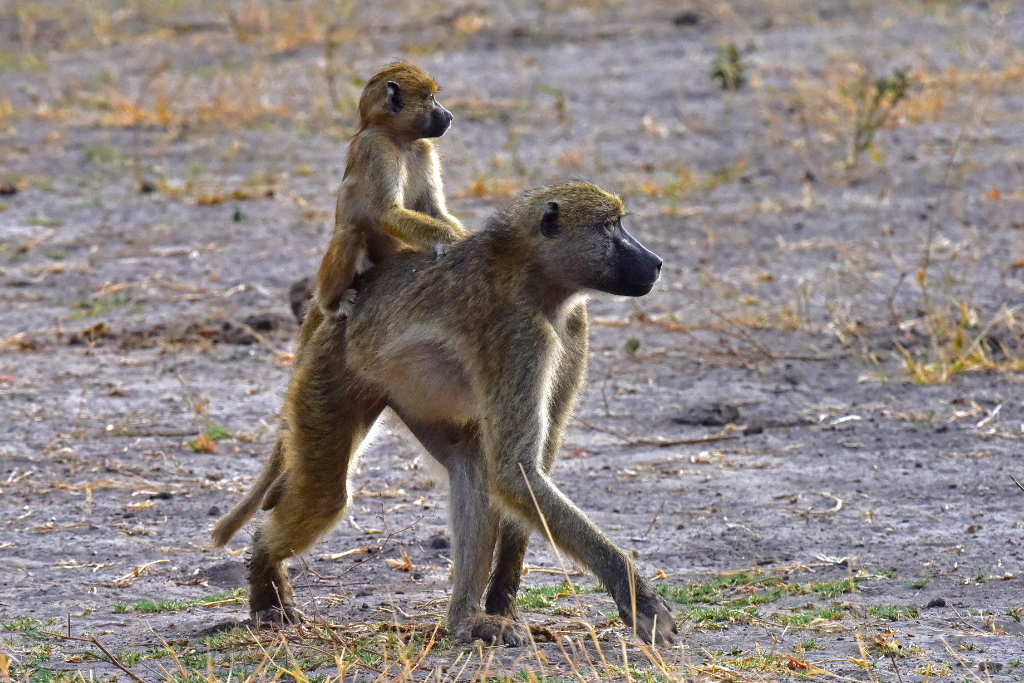
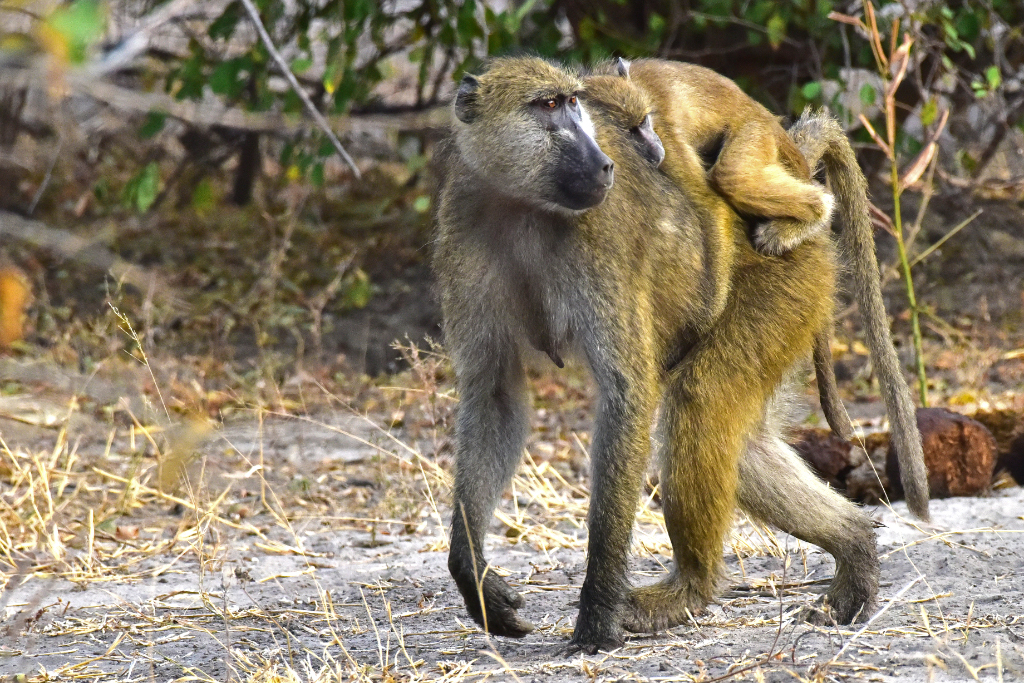
The animals in Chobe National Park are accustomed to the presence of safari trucks and do a good job of ignoring us. At one point a troop of baboons flooded across the road, splitting around our truck and carrying on as if we were not there. Baboons are interesting animals. We came across a bunch of baboons up a tree, throwing leaves down to impala below. They were actually feeding the impala. What do the baboons get our of the relationship? One guide told us they eat the placenta when the impala give birth, another told us they occasionally eat baby impala. Either way, isn’t that ranching?
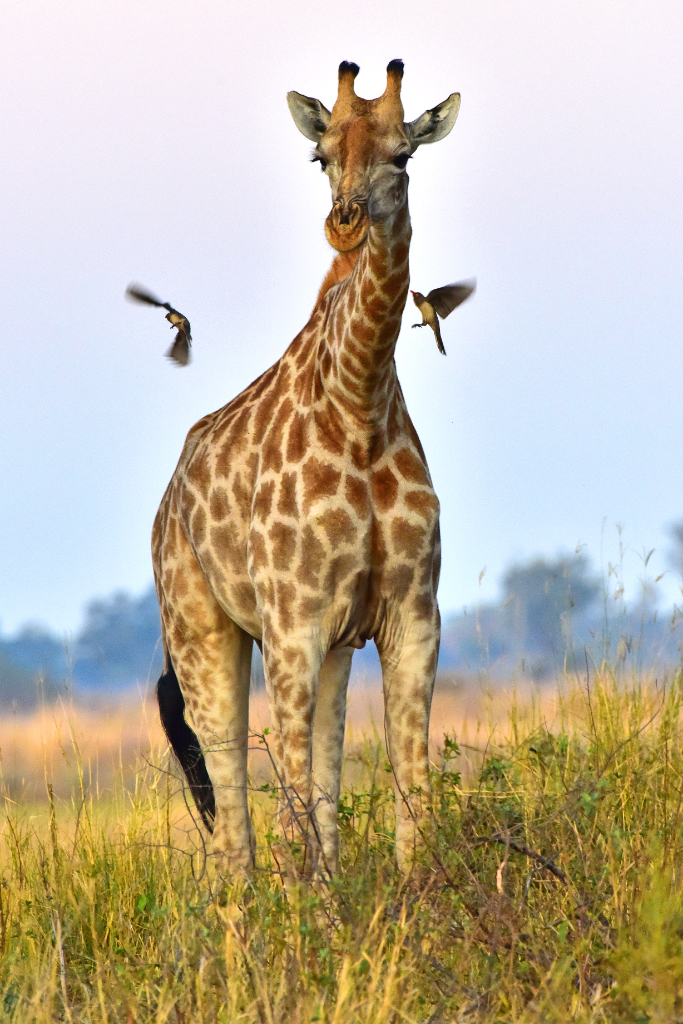
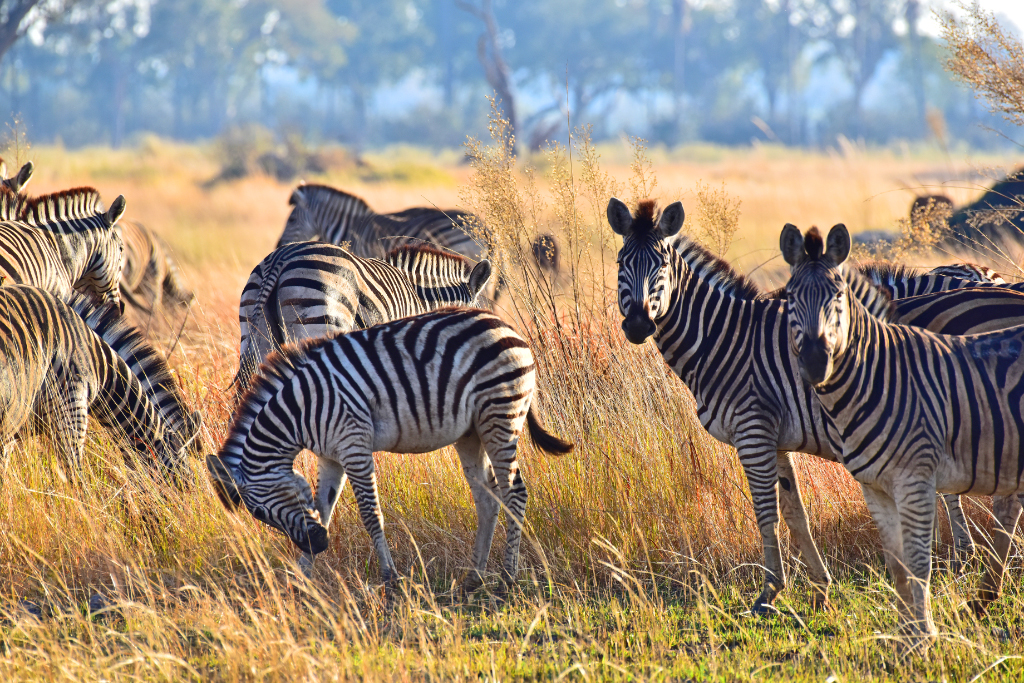
We’ve also seen a lot of giraffes and zebras. Both are more skittish than antelope, which makes approaching them closely quite a challenge. The zebra are amusing, often the whole herd will look at you as if choreographed. You can tell family members from the pattern of the diamond between the eyes and the triangle at the top of their front legs. Each zebra has a unique pattern of stripes.
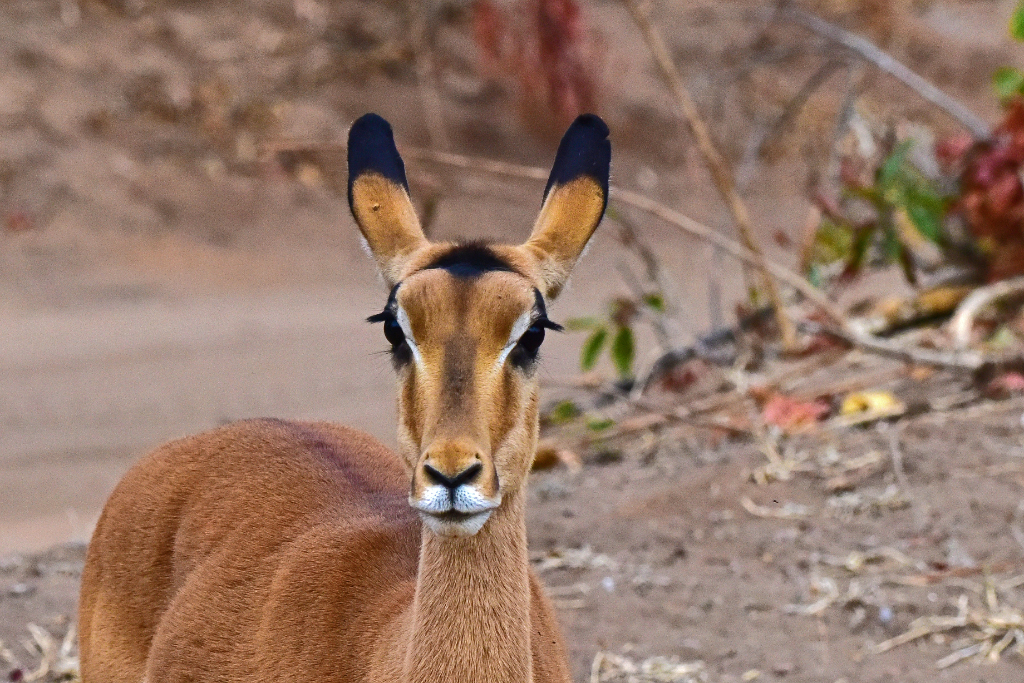
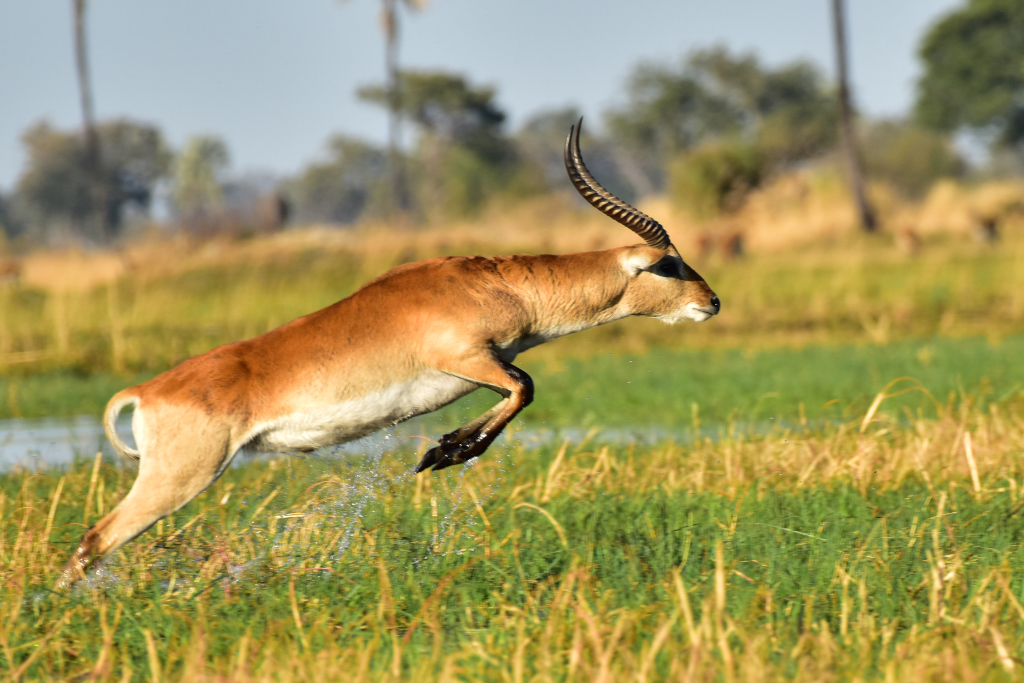
Impala and other antelope are everywhere. The ones in Chobe are accustomed to safari trucks and freeze amazingly close to the road. The ones in the Okavango Delta do not let us as close. One day at Rra Dinare we drove past an impala staring at us as they all do, but as we drove by it became apparent it was fixated on the brush across the road. Our guide killed the engine and watched the impala and the birds across the road. He started the truck and into the brush we drove, scaring up a single African wild cat. Looking much like our domestic cats, the wild cat lives in the brush, is mainly nocturnal, and lives on rodents and small mammals. No picture, it was gone way too fast! The Impala clearly knew it was there, just wasn’t sure what it was.
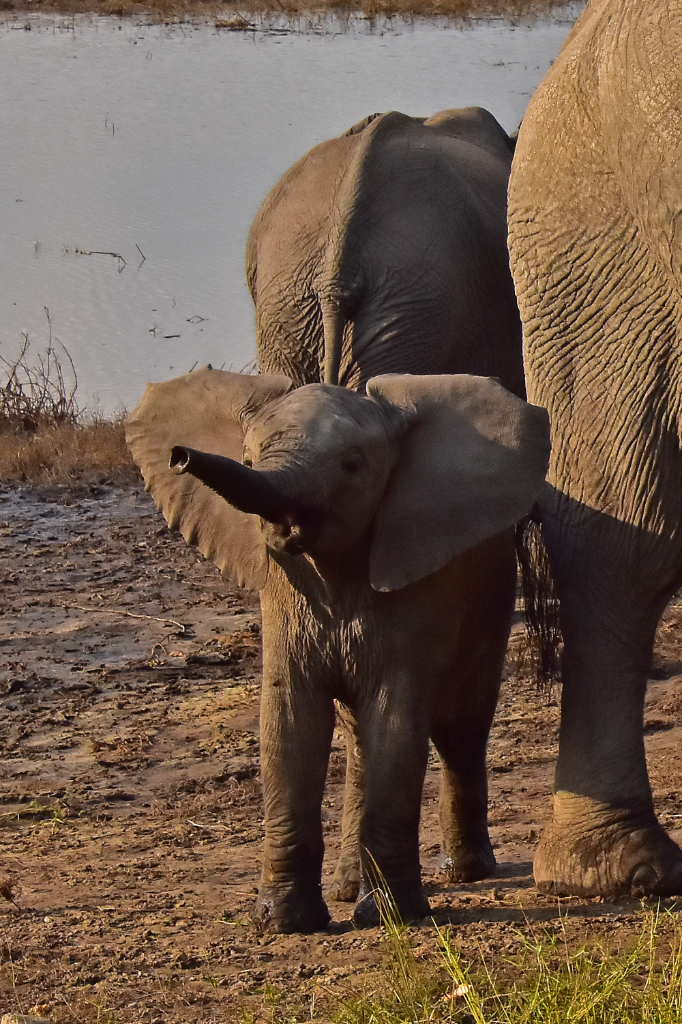
We’ve had many close encounters with elephant herds. Alco, our guide at Rra Dinare, told us the elephants, lions and other animals see the safari truck as a single entity and have learned to largely ignore them. As long as no one gets out of the truck, stands up, or starts yelling. No screaming either! We commonly pull up alongside a herd and watch them wander past.
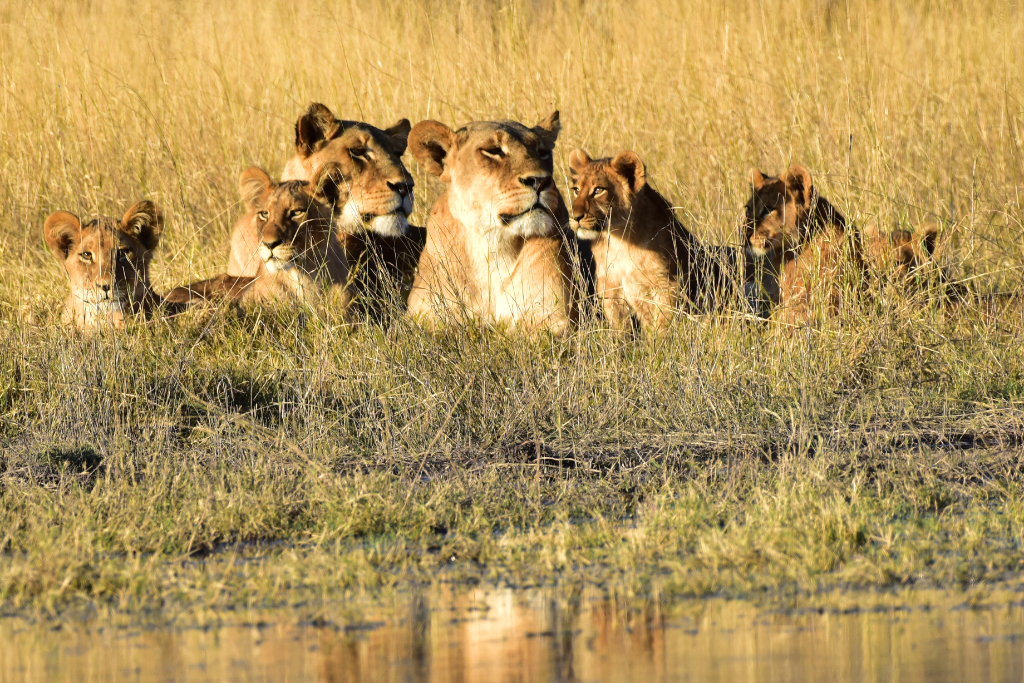
We have observed several prides of lion, some uncomfortably close. The two lionesses above were across the watering hole from us, but we did eventually move to their side for more pictures. Alco told us the cubs were acting hungry, and sure enough the two lionesses headed out to hunt after our portrait session. Alco asked if we wanted to follow them, but we decided they had given us great pictures, they should be able to hunt without a noisy safari truck tagging along. Alco was relieved we didn’t need more pictures.
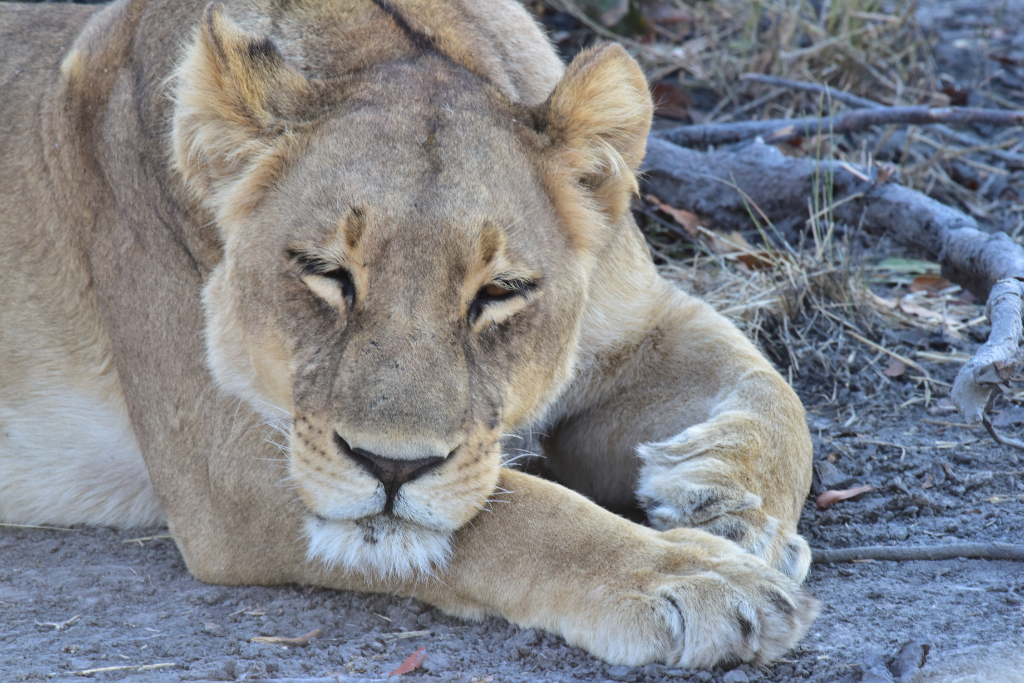
This particular family unit had several nursing lionesses and a resident male growling at everyone. At one point a juvenile actually laid down about three feet from the truck.
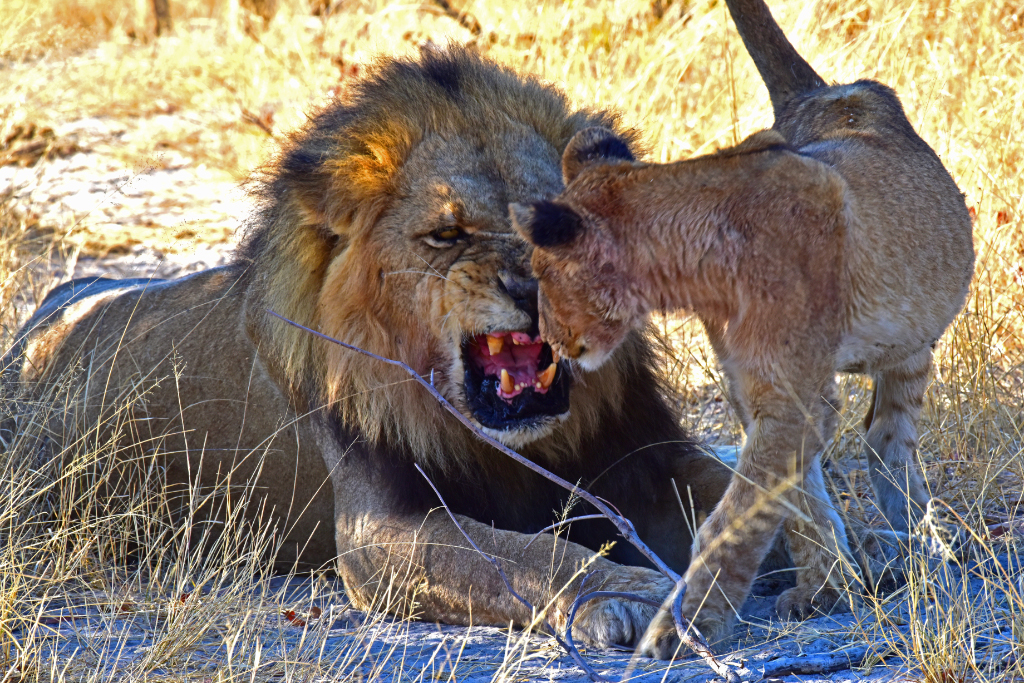
During our game drives at Rra Dinare the guide would pull the truck to the side of the road to look at animal tracks. It helps to know what animals have wandered through recently, and he found a lot of animals this way, including the leopard at the top of this page.
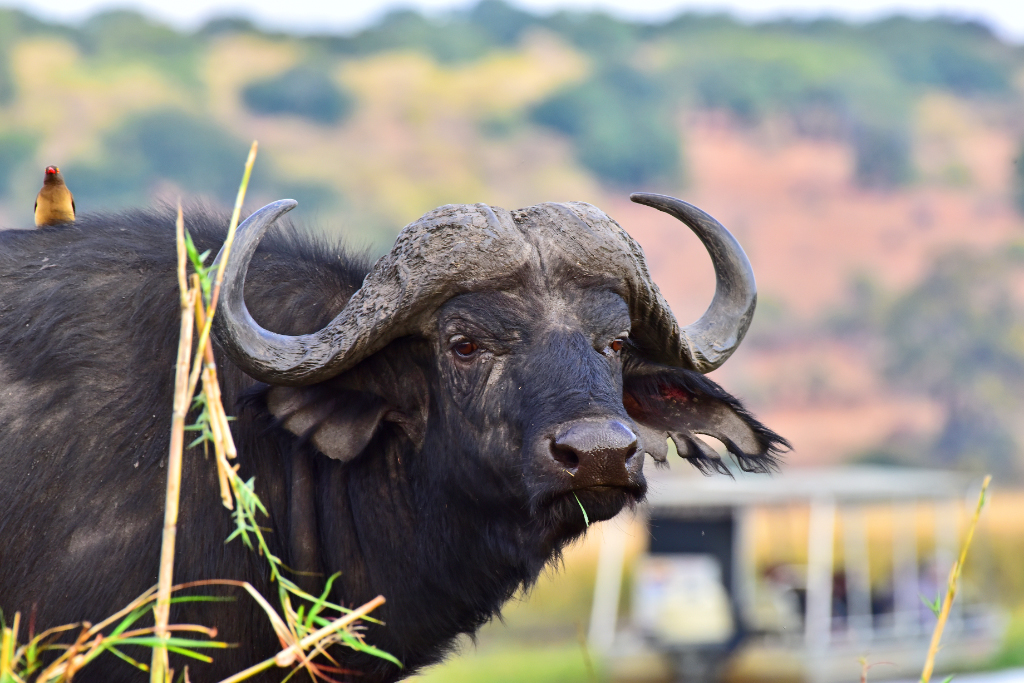
Many water buffalo. They were pretty safe to be around, even when we drove by a huge herd they just took turns with the closest one staring at us until we moved on.
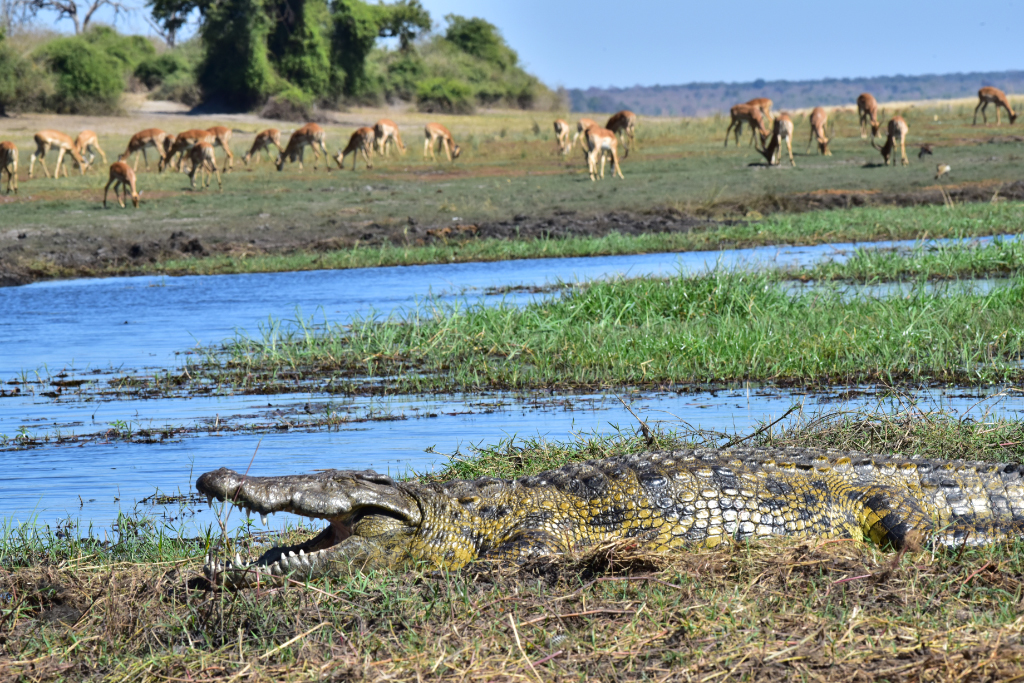
There are crocodiles everywhere. From vehicles there is little concern, and they move very little. They open their mouths to cool off, not sure whether they look more menacing with their mouth open or closed. Closed, they look like they have too many teeth to fit inside their mouth.
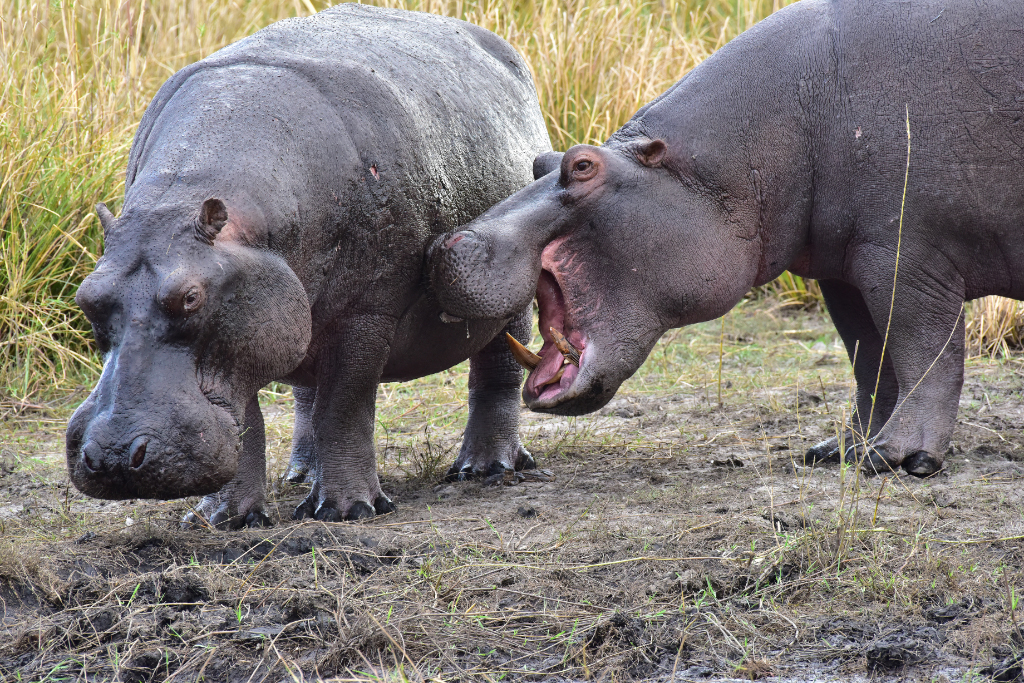
Hippos are the most aggressive but most of our encounters have been when they are in the water. Or from boats. We took a ‘walking safari” at Moremi Crossing, mainly we looked at poop. At one point our guide, Action, stopped by a downed tree and told us when being chased by a hippo to run over and around downfalls to slow them down. We went on to tell us a story of a man from his village who saved himself by diving under a downfall. He then ask if we were ready to move on. I asked, “Action, why are you giving us advice on running from a hippo when we are walking through the bush?”. Everyone laughed, but I thought Action’s was a nervous laugh. We did make it back without running serpentine in front of any large animals.
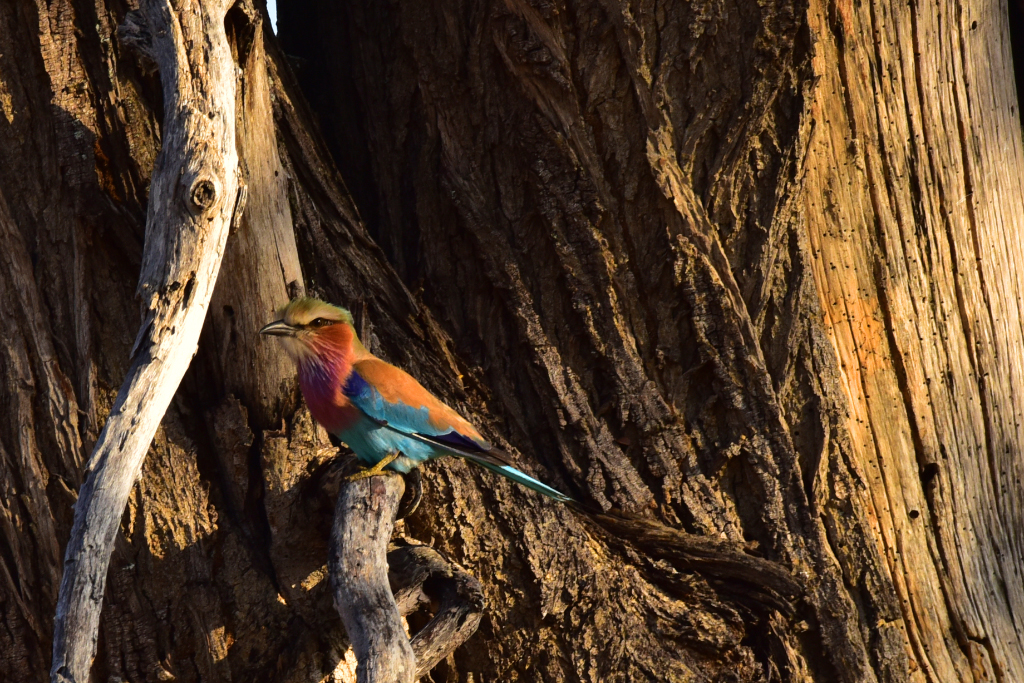
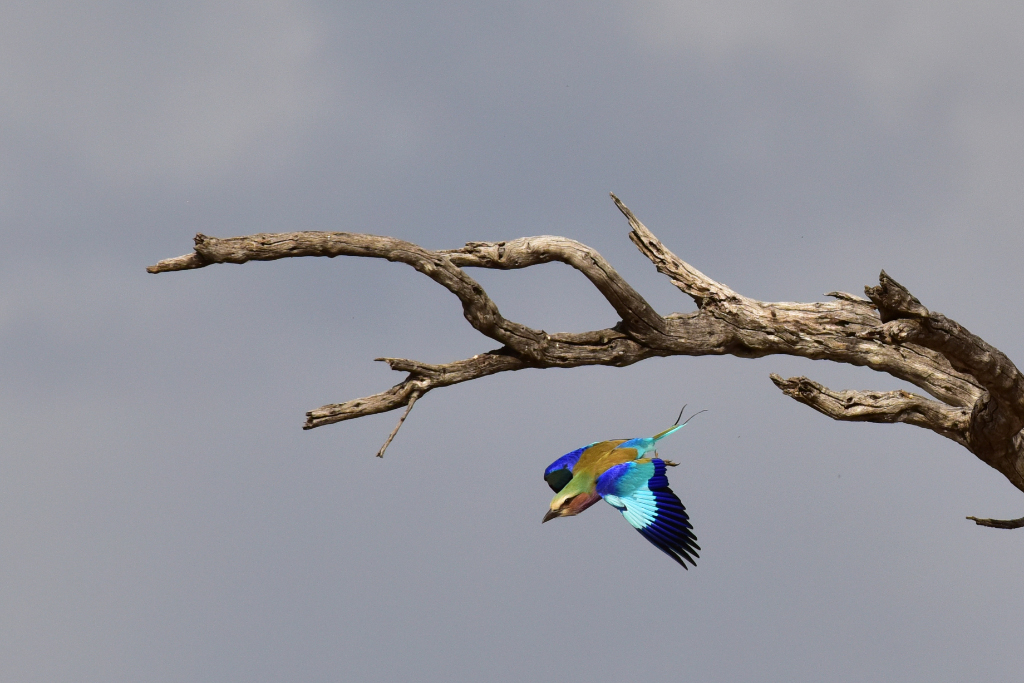
I feel like I’ve become a birder, there are so many birds to learn here. Many colorful. Many hard to photograph when you can’t camp in front of them with camera on tripod. The above Lilac Breasted Roller is easy to catch sitting, but it is such a small bird it is incredibly difficult to photograph in flight, especially with a hand-held long lens. Still don’t have a good photo of one, but I have a few weeks left. At least in the photo above you can see what I am trying to capture.
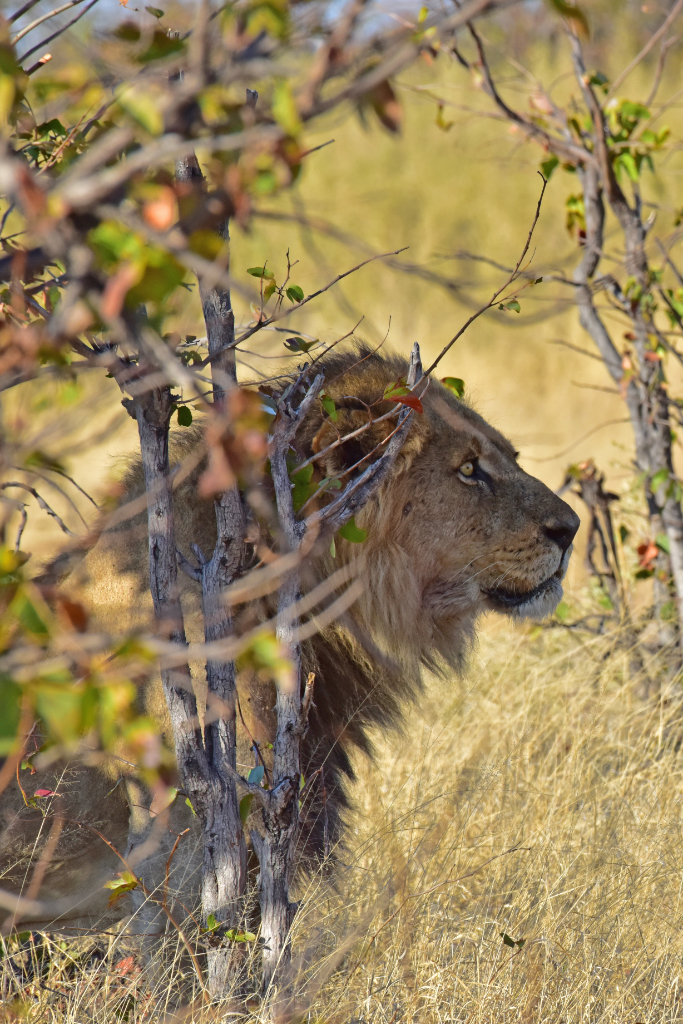
Our last morning our flight was leaving at 11am so we opted for a last game drive. We started with Alco trying to find us a cheetah, which are rare and elusive. Then the morning turned into a game guide’s dream. One of the other trucks had found a pride of lions with a fresh kill – a giraffe. As we drove toward that kill we ran across another pride of lions at a somewhat dried up watering hole. Our first male lion in Rra Dinare! We took many photos and as we resumed our drive to the Giraffe kill site, another call came in for a leopard with a fresh impala kill. We opted for the leopard and drove that way.
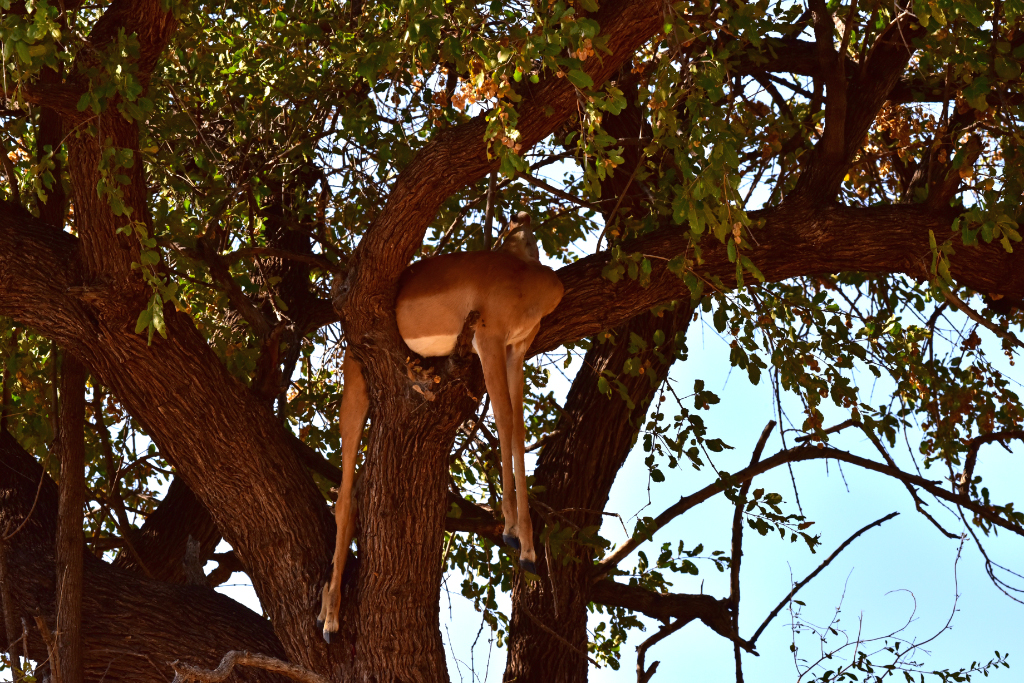
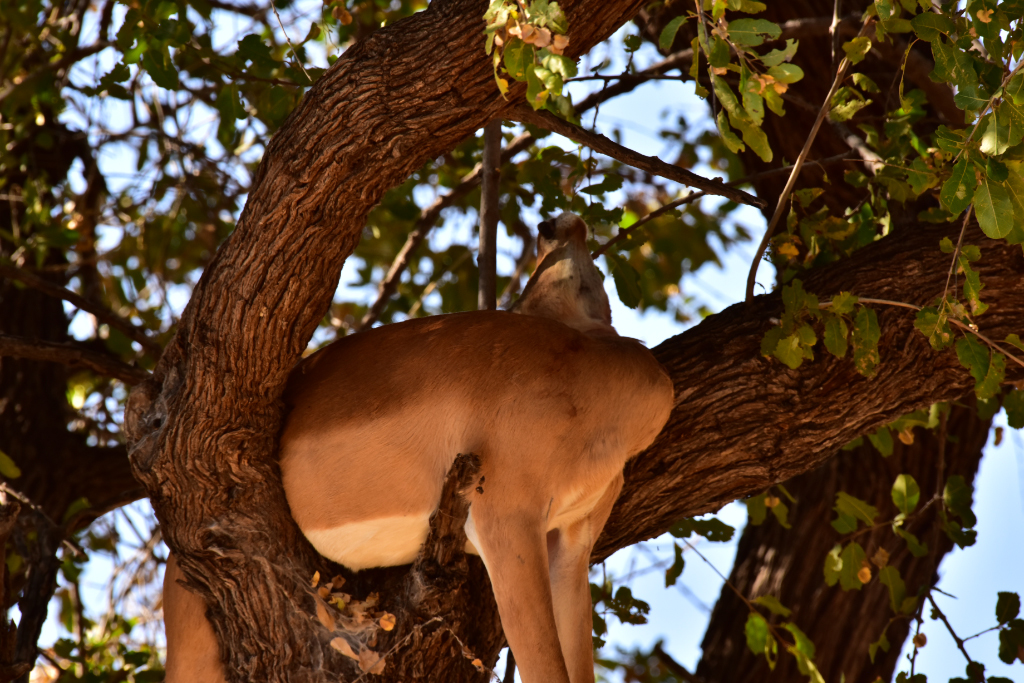
Leopards drag their kills up a tree where they are safe from lions, hyenas, and other predators and scavengers. When we arrived at the tree, the leopard was under a nearby bush, driven off by the safari trucks. We tracked it for a few minutes and then returned to the impala in the tree. Alco said the leopard would return when we left and will spend three or four days around the tree eating it’s catch. Teresa didn’t want her last picture from Botswana to be a dead animal. I think it’s important to remember we are not in a zoo, but are observing animal participants in a very active food chain. While you would like to believe all these animals we see live happy, free lives, all the predators are healthy and available because they are well fed. Reality check. But Botswana is still an amazing place, and just so this blog doesn’t end on pictures of dead animals, here’s a couple more elephant pictures from our boat trip in Moremi Crossing.
